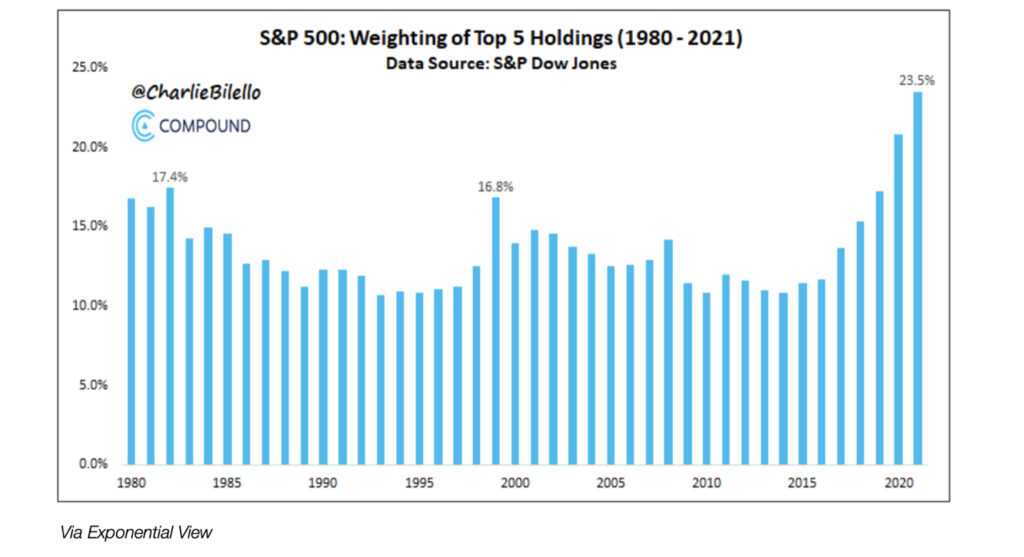Swaledale under snow

Last Sunday morning. Blissfully peaceful.
Quote of the Day
”I read part of it the whole way through.”
- Sam Goldwyn on being asked whether he had read a particular book.
Musical alternative to the morning’s radio news
The Lark in the Morning | Cillian Vallely (Uileann pipes) and Alan Murray (Guitar)
Wonderful rendition of a lovely tune.
Long Read of the Day
Learning from machine learning
The world is a black box full of extreme specificity: it might be predictable but that doesn’t mean it is understandable.
Fascinating essay by David Weinberger, which tries to address one of my complaints about the “crippled epistemology” of machine learning — i.e. that it finds only correlations, whereas true understanding requires a theory of causal connections.
Here’s the core of the matter:
As we grow more and more reliant on machine learning models (MLMs) such as DeepMetab that we cannot understand, we could start to tell ourselves either of two narratives:
The first narrative says that inexplicability is a drawback we often must put up with in order to gain the useful, probabilistic output that MLMs generate.
The second says that the inexplicability is not a drawback but a truth: MLMs work because they’re better at reading the world than we are: they result from the statistical interrelating of more and finer-detailed data than other systems can manage, without having to worry about explaining itself to us humans. Every time a concerned citizen or regulator cries out in understandable despair: ‘We don’t know how machine learning works!’, we hear that these models do indeed work.
If machine learning models work by dispensing with understandable rules, principles, laws and generalisations that explain complexity by simplifying it, then in the cry ‘It works!’ we detect beneath the Harmony of the Spheres the clacking and grating of all the motes and particulars asserting themselves in their interdependence as the Real. The success of our technology is teaching us that the world is the real black box.
It’s a really interesting piece, beautifully written. And it contains a rather good general explanation of the technology. But it ignores the purposes to which most machine-learning algorithms are currently put — namely not to further human understanding but to achieve the commercial goals of the companies that dominate the technology.
Thanks to Seb Schmoller for reminding me of it.
Martin Wolf on the twilight of democracy in America
Today, the transformation of the democratic republic into an autocracy has advanced. By 2024, it might be irreversible. If this does indeed happen, it will change almost everything in the world.
Nobody has outlined the danger more compellingly than Robert Kagan. His argument can be reduced to two main elements. First, the Republican party is defined not by ideology, but by its loyalty to Trump. Second, the amateurish “stop the steal” movement of the last election has now morphed into a well-advanced project. One part of this project is to remove officials who stopped Trump’s effort to reverse the results in 2020. But its main aim is to shift responsibility for deciding electoral outcomes to Republican-controlled legislatures.
Thus, health permitting, Trump will be the next Republican candidate. He will be backed by a party that is now his tool. Most important, in the words of David Frum, erstwhile speechwriter for George W Bush, “what the United States did not have before 2020 was a large national movement willing to justify mob violence to claim political power. Now it does.” It does so because its members believe their opponents are not “real” Americans. A liberal democracy cannot long endure if a major party believes defeat is illegitimate and must be rendered impossible.
From the Financial Times, 28 September.
Chart of the Day
Entrenched dominance of the top five

The top five holdings in the S&P500 now make up 23.5% of the entire index. The firms of the Exponential Age are cementing their leadership. A point to note is that two years ago, one could argue the S&P500 was no more concentrated than in previous highs. But that is clearly no longer the case.
My commonplace booklet
- An explication of R.B. Kitaj’s painting ‘The Wedding’ Link
This Blog is also available as a daily email. If you think that might suit you better, why not subscribe? One email a day, Monday through Friday, delivered to your inbox. It’s free, and you can always unsubscribe if you conclude your inbox is full enough already!
